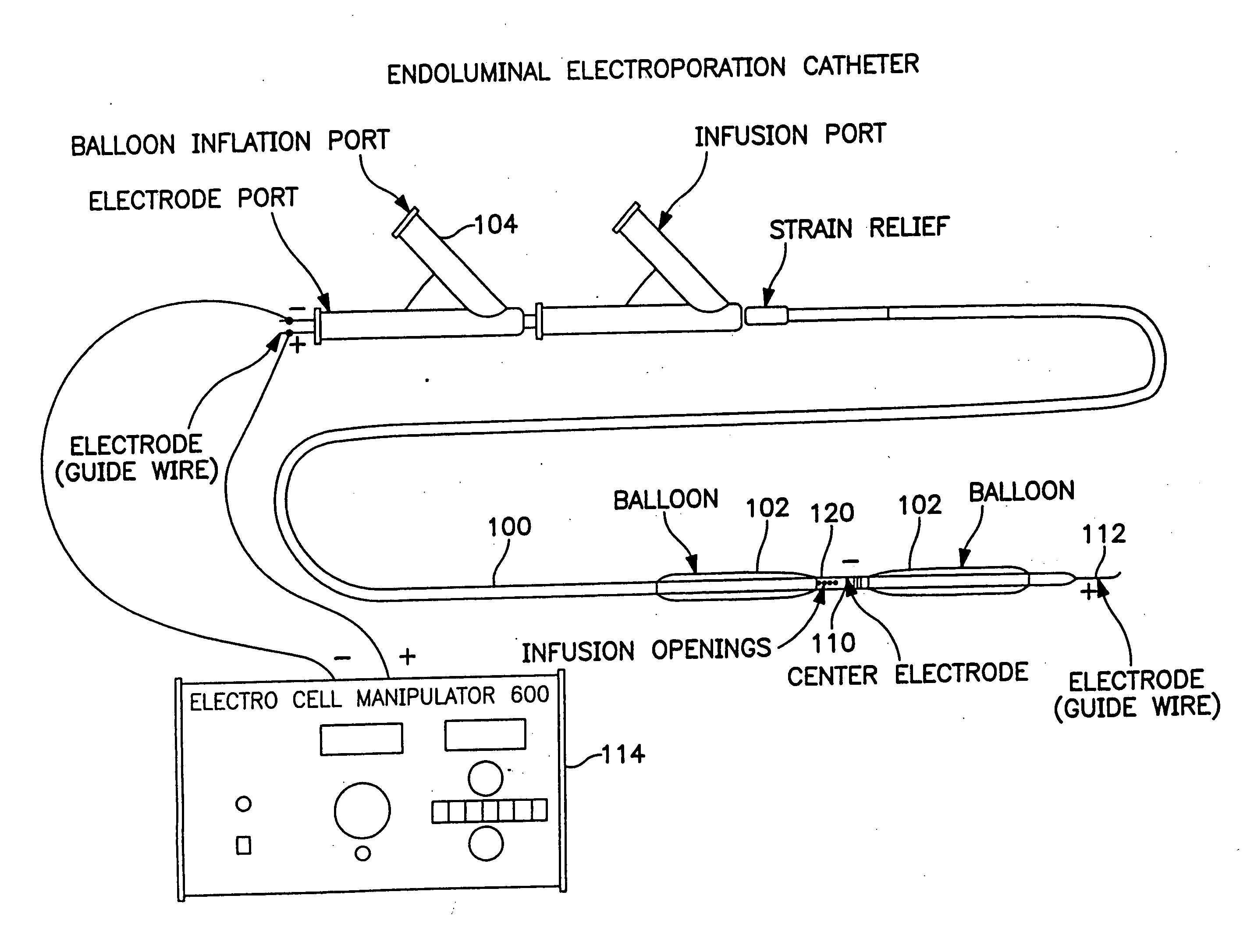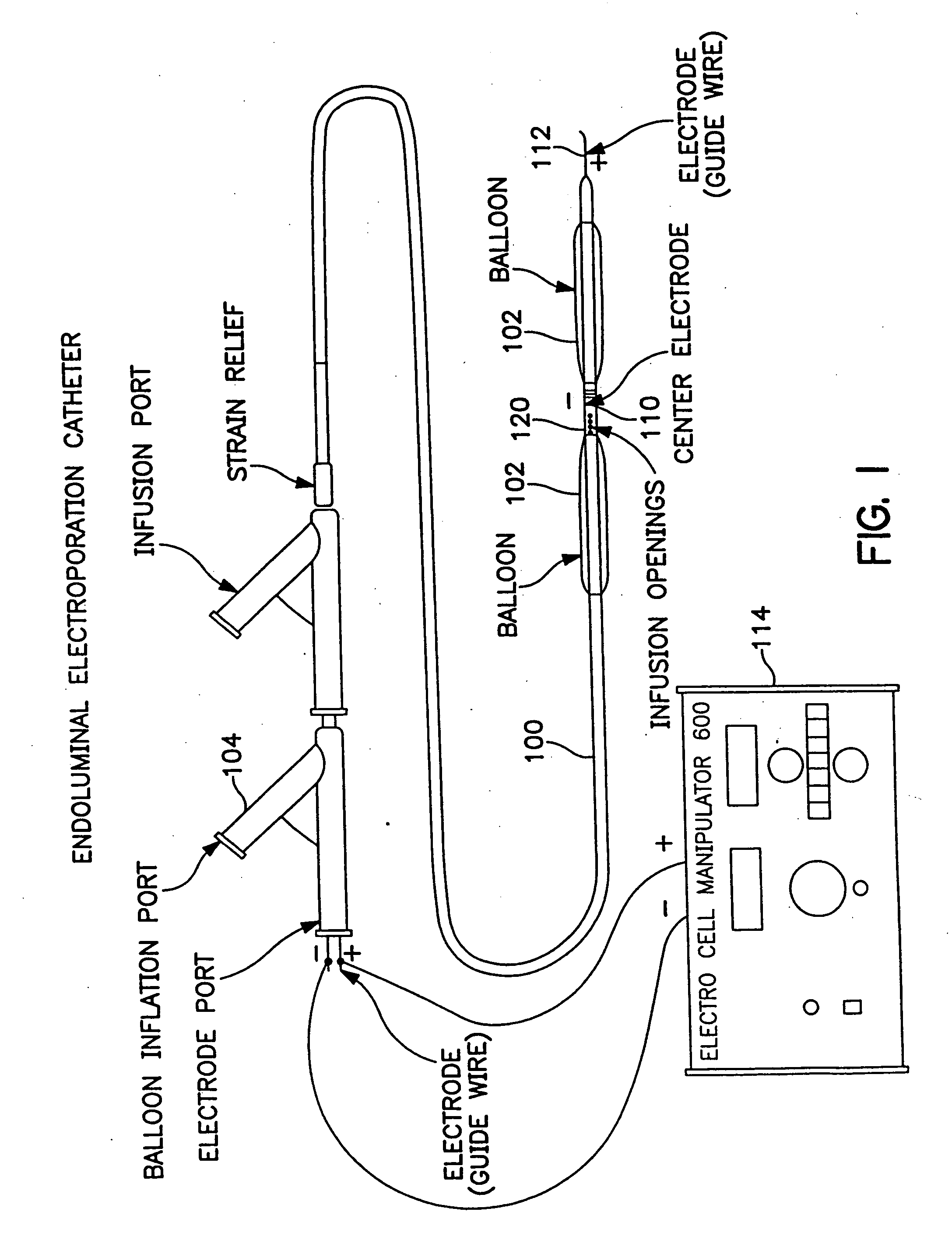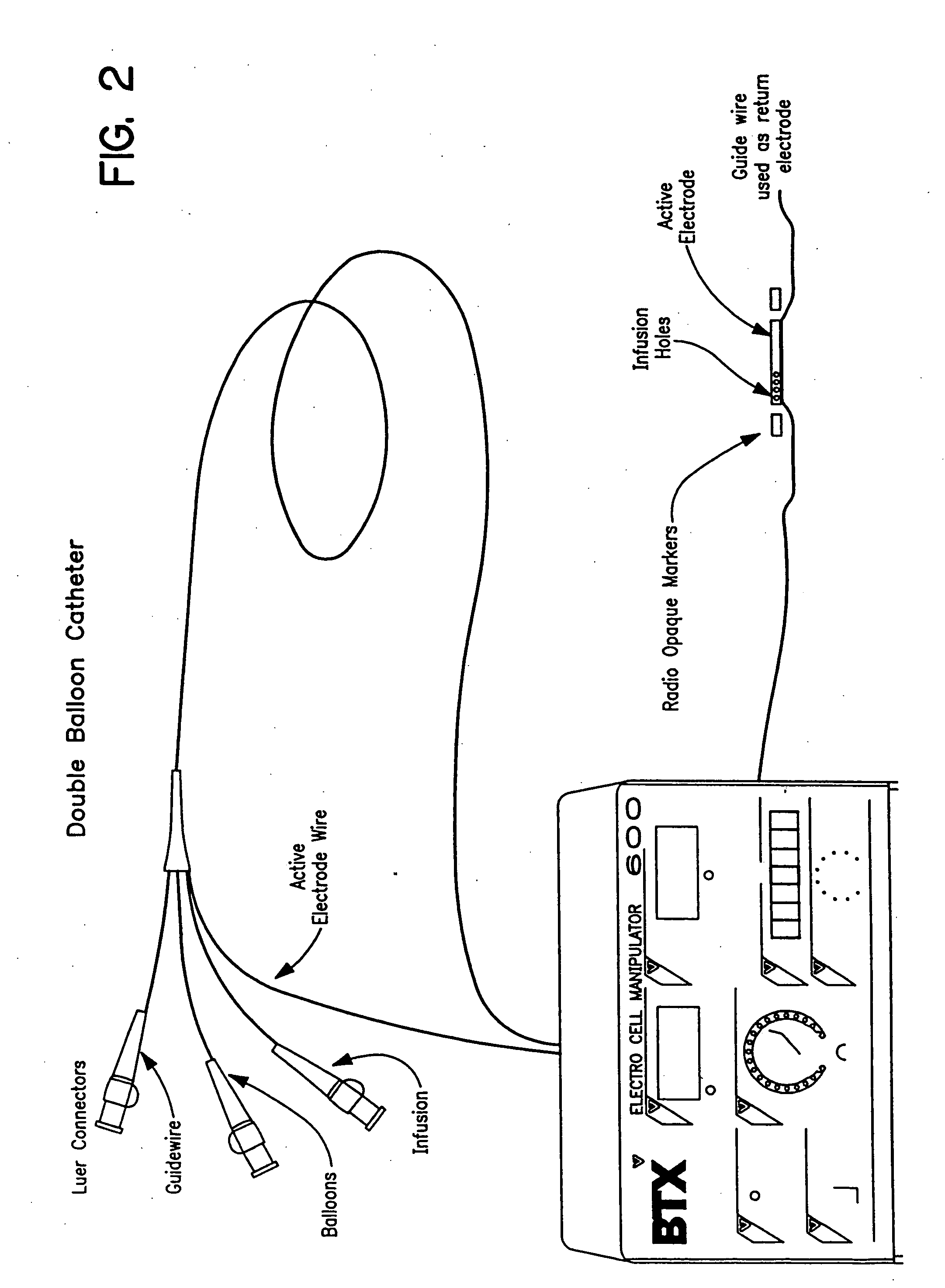Electrically induced vessel vasodilation
a technology of electric induction and vasodilation, which is applied in the field of electric induction of vessel vasodilation, can solve the problems of systemic administration failure to achieve effective concentrations of drugs at the targeted area, drug investigation also has been investigated, and achieves the effect of increasing the vasodilation of the vessel, and sufficient strength and duration
- Summary
- Abstract
- Description
- Claims
- Application Information
AI Technical Summary
Benefits of technology
Problems solved by technology
Method used
Image
Examples
example i
[0099] This example describes applying an electrical impulse to a vessel in a subject.
Animal Preparation and Surgical Approach:
[0100] This study conformed to the care and use of laboratory animals and standard euthanasia procedures policies by the NIH guide set forth in the Institutional Animal Care and Use Committee, and to the position of the American Heart Association on Research Animal Use. New Zealand White rabbits weighing 3.2-4.2 kg of both sexes (N=21) were utilized in the studies. After withdrawal of food for 12-18 hrs, but not water, the animals were sedated using 2 mg / Kg intramuscular xylazine (Miles Inc., KS) and 50 mg / Kg ketamine (Fort Dodge Lab, IA). Sedated animals were anesthetized with 30 mg / Kg α-chloralose (Fisher Scientific, NJ) throughout the ear vein and endotracheally intubated. Once anesthetized, the animal was strapped supine on the surgical table and ventilated with a volume controlled Harvard 665 ventilator (Harvard Apparatus, Natick, Mass.). Corneal and...
example ii
[0111] This example shows that an electrical impulse applied to a vessel of an animal increases the vessel luminal area.
[0112] Luminal area measurements of the arterial tissue sections were made by NIH image analysis software. Measurement of areas enclosed by the lumen in pulsed artery samples and non-pulsed (control) samples were performed in multiple sections in a given experiment. Statistical testing was performed with “Instat” software (Graphpad, San Diego, Calif.). Results were considered statistically significant when the probability of error was p—0.05.
[0113] A total of 120 serial tissue sections obtained from eight animals were examined. Fifty-seven sections were from electrically pulsed arteries and sixty-three sections were from non-electrically pulsed arteries. All experiments but one showed expansion of the vessel lumen after electropulsing at approximately 65 volts and a pulse length of 9 ms. The luminal vessel layer of the pulsed artery showed an average increase of ...
example iii
[0116] This example shows that the application of an electrical impulse to a vessel of an animal can deliver a composition into the vessel.
[0117] Fluoresceinated heparin (F-heparin; 167 units / mg of activity) was used as a probe. To ensure that the covalent bonded fluorescein had not been dissociated by electroporation, in vitro experiments were performed in an electroporation cuvette containing F-heparin. The solution was pulsed using the same electrical parameters as used in the in vivo studies. The sample was then loaded in a LKB ultropak column (TSK G4000sw) connected to an Anspec HPLC pump with a Shimadzu (SPD-6AV) UV-VIS spectrophotometric detector for analysis. The hard copy of the HPLC profile was obtained using Hitachi D-2500 chromato-integrator. Individual samples were also analyzed in a luminescence spectrometer (Perkin-Elmer LB-5, CA) at 490 nm excitation and emission at 520 nm.
[0118] Luminescence spectrometry and HPLC of electroporated F-heparin showed no differences f...
PUM
 Login to View More
Login to View More Abstract
Description
Claims
Application Information
 Login to View More
Login to View More - R&D
- Intellectual Property
- Life Sciences
- Materials
- Tech Scout
- Unparalleled Data Quality
- Higher Quality Content
- 60% Fewer Hallucinations
Browse by: Latest US Patents, China's latest patents, Technical Efficacy Thesaurus, Application Domain, Technology Topic, Popular Technical Reports.
© 2025 PatSnap. All rights reserved.Legal|Privacy policy|Modern Slavery Act Transparency Statement|Sitemap|About US| Contact US: help@patsnap.com



